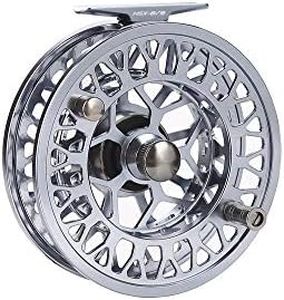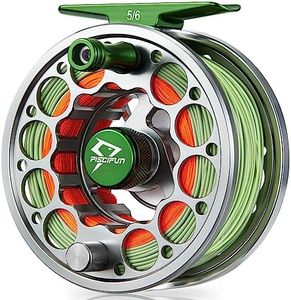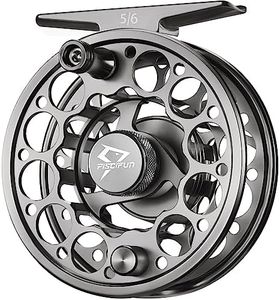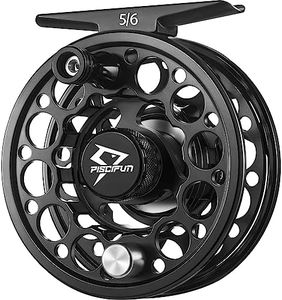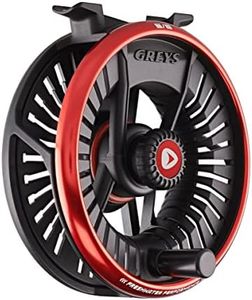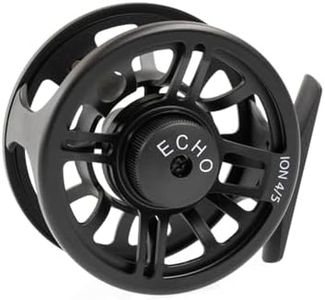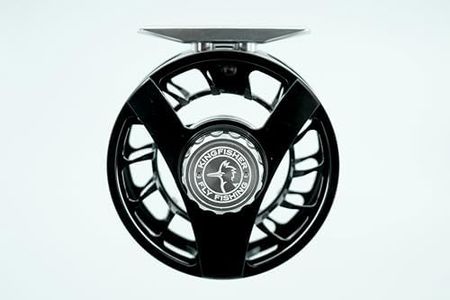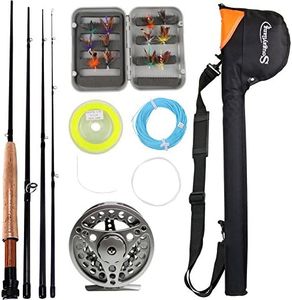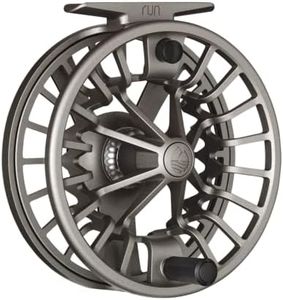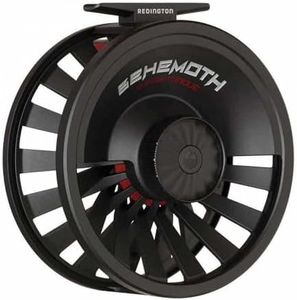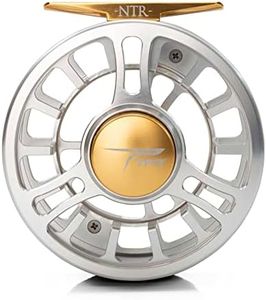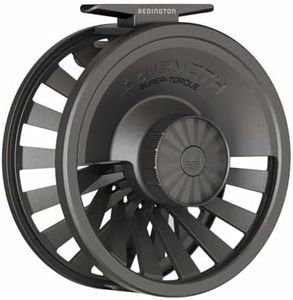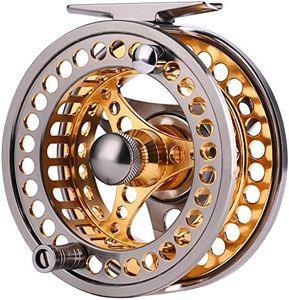We Use CookiesWe use cookies to enhance the security, performance,
functionality and for analytical and promotional activities. By continuing to browse this site you
are agreeing to our privacy policy
10 Best Fly Reels
From leading brands and best sellers available on the web.Buying Guide for the Best Fly Reels
Choosing the right fly reel is an important step for any angler, whether you're just getting started or looking to upgrade your gear. The fly reel connects the rod, line, and angler and plays a vital role in handling fish, retrieving line, and providing balance to your setup. When choosing a fly reel, it's key to match it to your rod and the type of fishing you'll be doing. A thoughtful choice ensures a more enjoyable and successful experience on the water.Reel Size (Weight Rating)Reel size refers to the line weight that the reel is designed to hold and is usually matched to your fly rod and fishing line. This is important because using a reel that's too small or too large can disrupt your setup's balance and affect casting performance. Generally, reel sizes are organized by weight categories (for example, 3-4 weight for light trout fishing, 7-8 weight for larger freshwater or smaller saltwater species). To choose, consider what species you'll target: smaller weights for trout and panfish, mid-weights for bass or larger freshwater fish, and heavier weights for big species like salmon or saltwater fishing.
Drag SystemThe drag system provides resistance when a fish pulls on the line, helping to prevent break-offs and tire the fish efficiently. There are two main types: click-and-pawl (simple, lighter, traditional) and disc drag (more refined, better for stronger fish). Simple systems are usually enough for smaller species, while disc drags are preferred for larger, faster fish where more control is needed. Choose a drag system based on the fish you pursue and whether you want simplicity or advanced control.
Reel Construction MaterialMaterials range from cast aluminum and composite to fully machined aluminum. This spec determines the reel's weight, durability, and feel. Cast reels are lighter and cheaper but less durable, while machined reels are sturdier and handle heavy use better. For casual, infrequent fishing, lighter or composite reels may suffice. For frequent or challenging fishing (big fish, rocky environments), opt for more robust machined reels.
Arbor SizeThe arbor is the central part of the reel where the line is wound. There are standard, mid-arbor, and large-arbor reels. Arbor size affects line retrieval speed and line memory. Larger arbors allow quicker line pickup and reduce line coiling, making them ideal if you need to retrieve slack quickly or fish in wide-open areas. Standard arbors provide a classic look and slower retrieve, suitable for calmer, less demanding fishing.
WeightA reel's weight influences how your rod feels in hand and can affect fatigue over a long session. A heavier reel can balance longer rods well, while lightweight reels are best for shorter or lighter rods. Matching the reel weight to your rod helps ensure comfortable, efficient casting, especially if you plan to fish for extended periods.
Line CapacityLine capacity refers to how much backing and fly line a reel can hold. This matters when targeting fish that make long, powerful runs. If you're fishing for species that might take out a lot of line, look for a reel with ample capacity. For smaller, closer-in fishing, less capacity is needed. Consider the line weight and fishing environment to determine the right amount.
